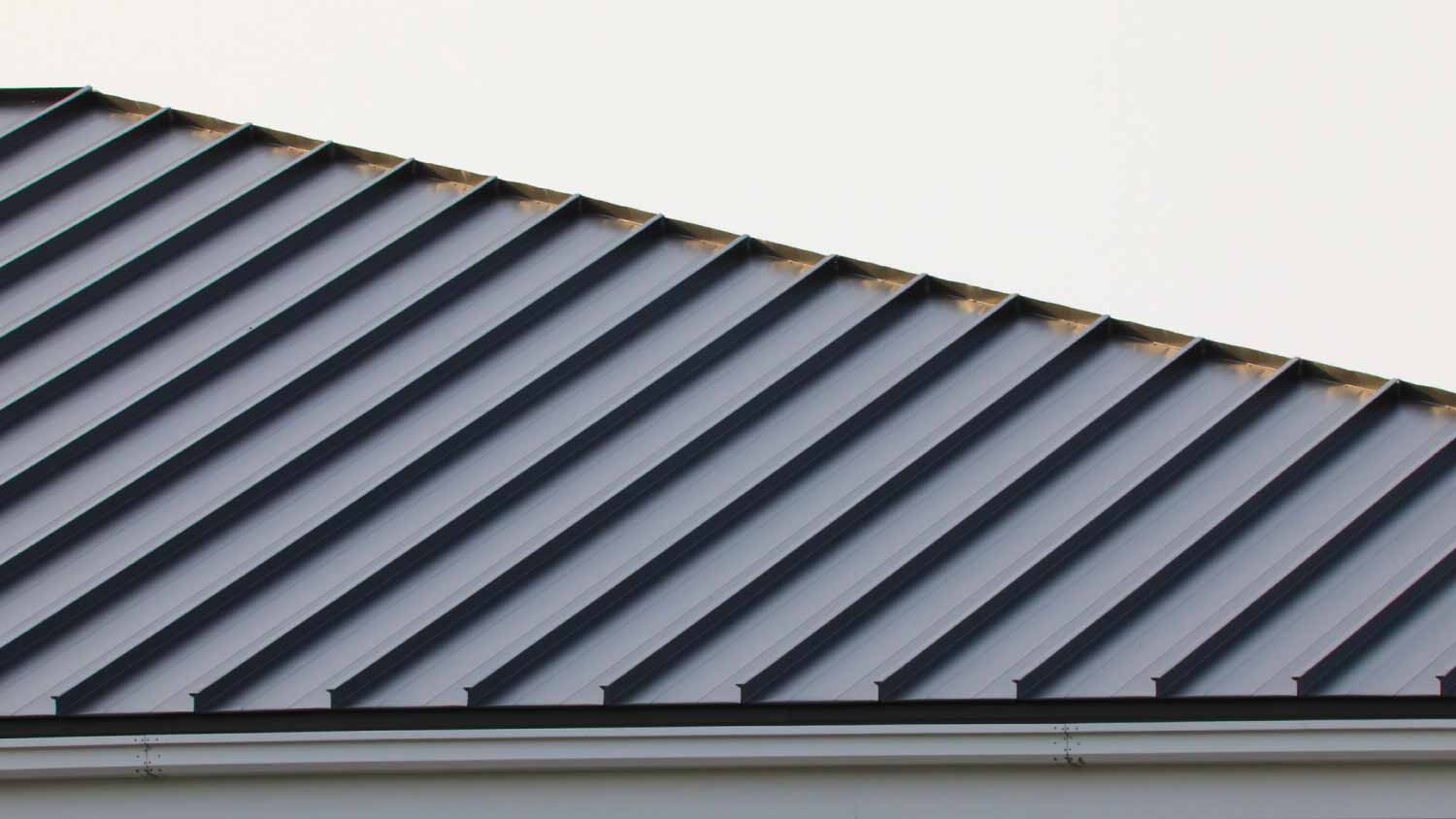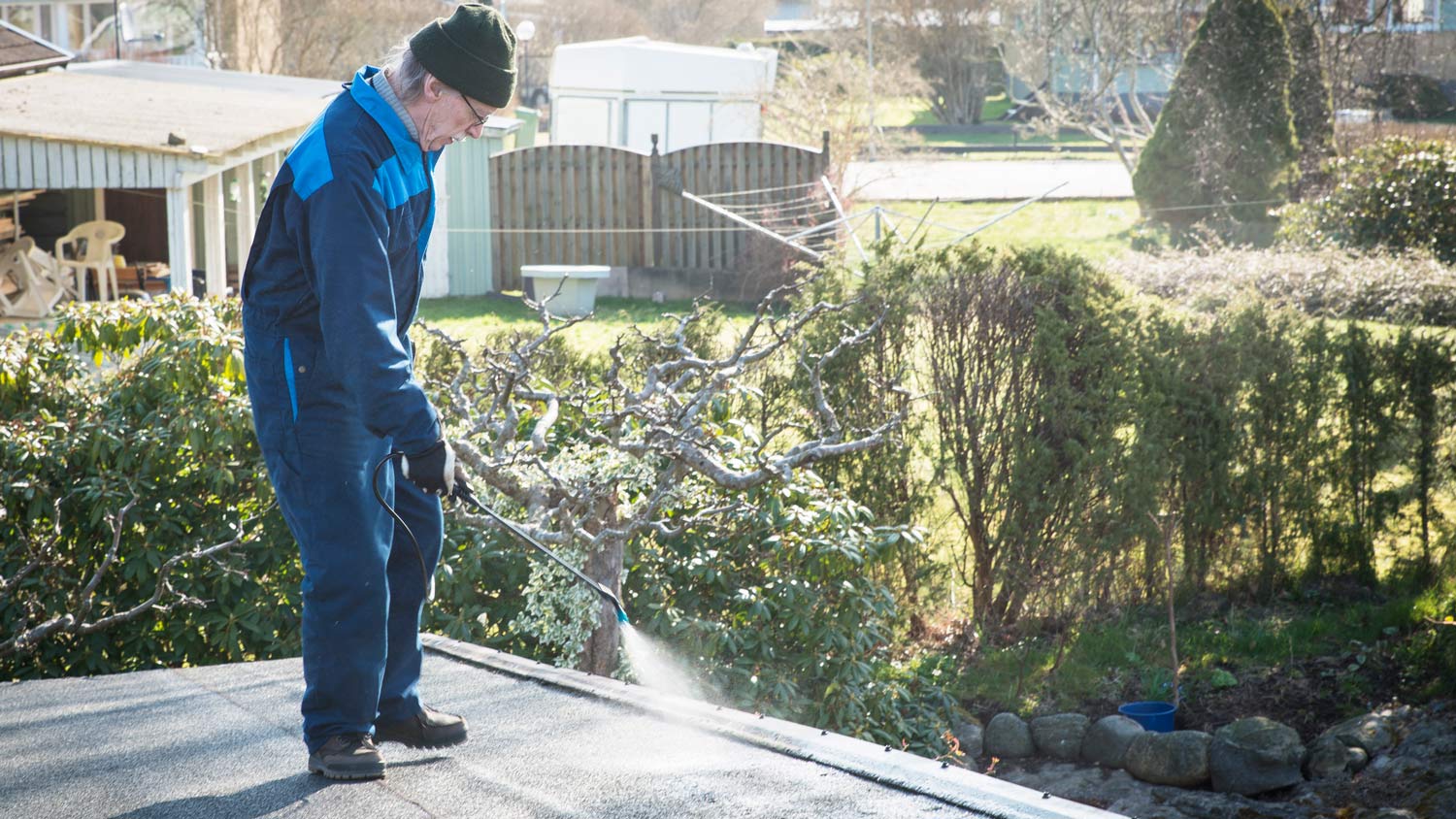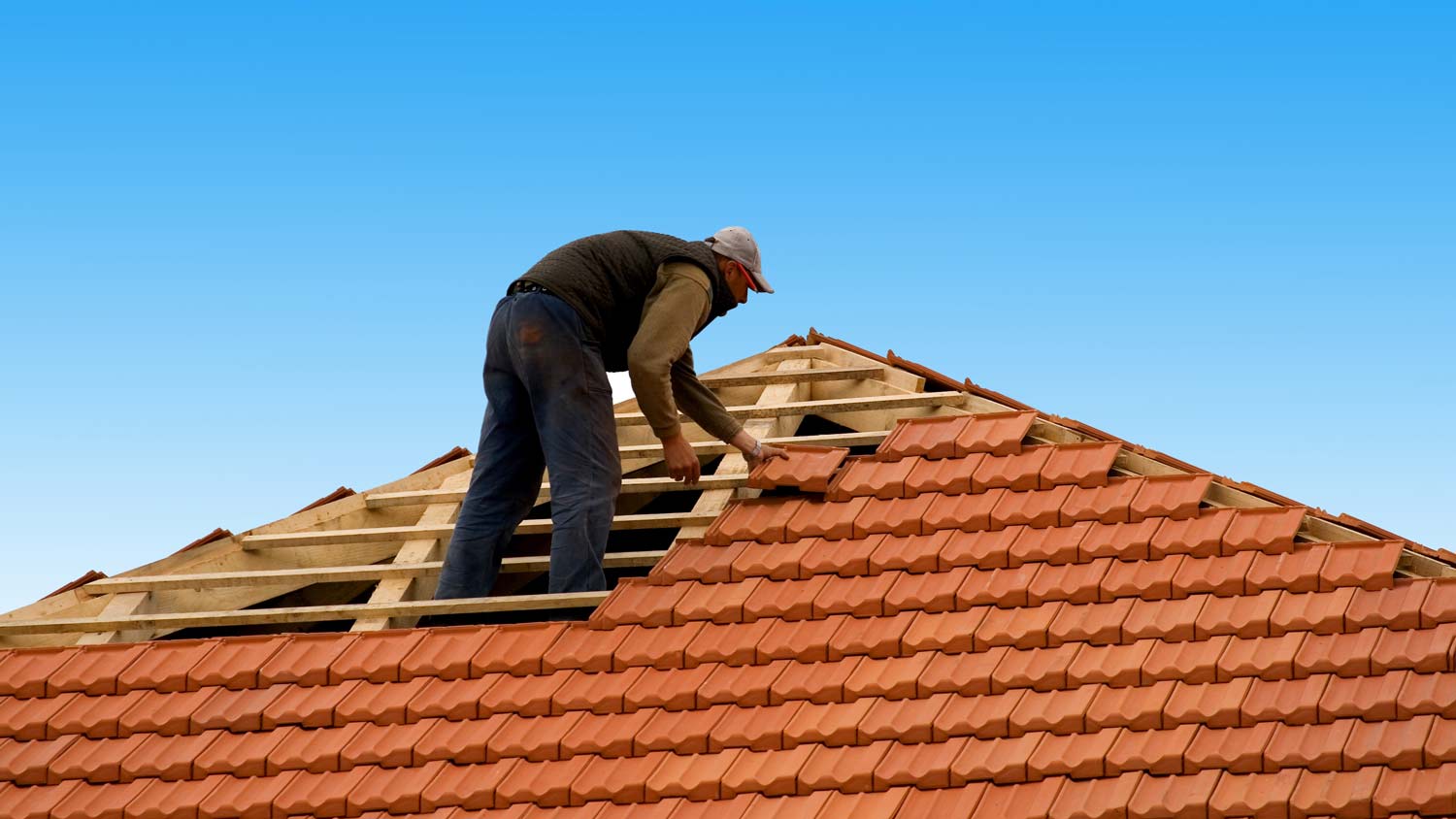
Did you know there are different types of roof inspections? This guide will help you weigh roof inspection costs to figure out what’s worth it.
Choosing the wrong roof pitch is a slippery slope


The minimum pitch for a metal roof is 1/4:12, which is possible only for a standing seam metal roof.
The average pitch for a metal roof is 3:12, and steeper roofs are better in areas that see heavy snow accumulation and above-average rainfall.
Steeper metal roofs require more materials and are more expensive, but they shed rain and snow more effectively.
Roof pitch is an important factor to consider, as it affects how well your roof sheds rain and snow. The minimum pitch for a metal roof is 1/4:12, which means a 1/4" rise for every 12 inches of run. However, the appropriate pitch depends on the type of metal roof you have and your climate. In this guide, we’ll explain the minimum pitch for a metal roof, how the metal roof design affects the ideal pitch, and more.
The minimum pitch for a metal roof is 1/4:12, according to building code, but this is only appropriate for a standing seam metal roof. Steeper pitches are required for other types of metal roofs.
The minimum pitch for a corrugated metal roof is 3:12, which means 3 inches of rise for every 12 inches of run. Residential buildings normally have pitches of between 4:12 and 9:12, so a 3:12 pitch is more common on sheds and other outbuildings.
When a local metal roof installer installs a standing seam metal roof, they crimp or fasten the joints to provide better weatherproofing. That increased water resistance means a shallower roof slope is possible. The minimum pitch for a standing seam metal roof is 1/4:12 if the installer uses lap sealant for even better protection from water and snow accumulation. Without lap sealant, the minimum recommended pitch is 1/2:12, but 1/4:12 is still possible in areas that don’t see a lot of rain or snow.
The minimum pitch for a metal shingle roof is 3:12. It’s not feasible to install lap sealant between all metal shingles, so shallower pitches will increase the risk of water intrusion.
Installers can solder some metal roofing materials, like copper, creating an entirely waterproof seam between panels. The minimum recommended pitch for a soldered metal roof is still 3:12, but you could go shallower—as low as 1/4:12—with proper installation.
Roof pitch is a crucial aspect of your roofing system to get right because the wrong pitch can create issues with your gutters and even cause structural damage to your home. If your roof pitch is too shallow, it won’t shed snow as easily, and heavy accumulation can add too much weight to your home and cause structural issues. Too steep of a roof pitch will route water too quickly off your roof, sometimes causing it to run over your gutters and fall around your home foundation. Over time, excessive runoff can create foundation problems.

Calculating the right roof pitch for your metal roof requires considering a few key factors.
Climate is the most significant thing to consider when choosing the right metal roof pitch. In areas that see a lot of snow, roof pitches of 6:12 or steeper are ideal to reduce the risk of heavy snow accumulation that can lead to structural damage or roof collapse. In areas that see intense rainfall, a roof pitch of 3:12 or 4:12 is ideal. These shallower pitches won’t cause runoff to flow over your gutters, but they’re steep enough that you don’t run the risk of water seeping through the seams between panels or shingles.
A new metal roof will increase home value, especially if you conform to neighborhood standards, so you should choose your roof pitch based partially on aesthetics and roof design. For example, gable roofs look most natural with a roof pitch of 6:12 or 8:12, while hip roofs normally have shallower pitches of 4:12 or 6:12.
Steeper roofs have larger roof planes that require more material to cover, so steeper roofs will always cost more for a given home's square footage. Consider metal roof cost and function in your climate to determine what works best for your home.
From average costs to expert advice, get all the answers you need to get your job done.

Did you know there are different types of roof inspections? This guide will help you weigh roof inspection costs to figure out what’s worth it.

Spray foam roofing is a budget-friendly option to protect your home from energy loss and water damage. Learn how much spray foam roofing costs.

Thatched roofs add tons of old-world charm to your home and provide outstanding insulation. Learn about thatched roof costs and what affects your final price.

Courteous homeowners may wonder what the etiquette is when it comes to tipping roofers. Find out if, when, and how you should tip roofers for a job well done.

Find out the average tile roof repair cost, key price factors, and ways to save. Get expert tips to plan your tile roof repair project with confidence.

What's a cupola? Is it possible to have one on my home? What do they look like? Learn all about the variety of cupolas you can add to your home or barn.